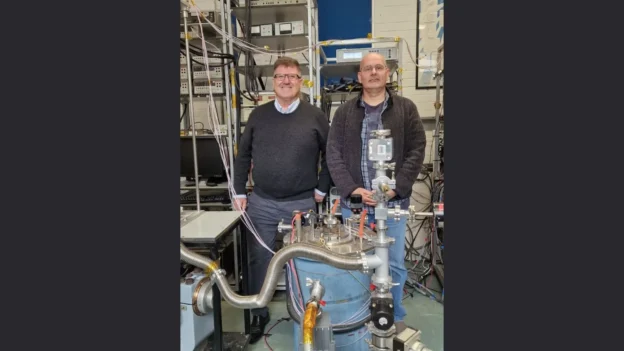Durham University’s scientific team has completed an extensive testing program to verify the performance of superconducting cables destined for the international reactor ITERreactor, which is being built in southern France.
This work represents one of the largest quality control efforts performed on advanced materials for energy applications.
With more than 5,500 samples processed and some 13,000 independent measurements, the laboratory led by Professor Damian Hampshire and Dr. Mark Raine has contributed directly to the design and reliability of the magnets that will form the magnetic cage that will confine the plasma in the reactor. This stage is essential to enable controlled fusion reactions at temperatures above those of the solar core.
Superconducting materials under extreme conditions
The analyzed wires are composed of alloys such as Nb₃Sn and Nb-Ti, fundamental to maintain the stability of the ITER magnetic system. The handling of these materials included heat treatments above 650 °C, which prevented the possibility of repeating measurements on the same strand.
Faced with this challenge, the team developed an innovative statistical approach that allowed validation of results using adjacent filaments evaluated in different laboratories. This method has proven to be an effective and economical alternative to ensure consistency in the overall manufacturing of these components.
The ITER reactor and clean energy
The ITER experiment represents a technology demonstration and a turning point for the future of clean energy. clean energy. The superconducting magnets are the operational heart of the reactor, and their reliability is critical to the success of the system.
While ITER plans to generate its first plasma in 2035, companies such as Helion and Commonwealth Fusion Systems are already moving ahead with commercial plans, backed by technology giants such as Microsoft and Google. In parallel, the UK is accelerating the construction of its STEP prototype in Nottinghamshire.
Durham’s research not only ensures technical standards for ITER, but also opens the door to future applications in commercial reactors. In addition, its methods are being shared as an open resource for researchers working on new generations of fusion reactors.
Beyond experimental work, Durham University is actively involved in the training of specialists through the UK Fusion Energy Doctoral Training Center. This educational commitment ensures a solid scientific foundation to meet the challenges of the global energy transition.
Source and photo: Durham University via EurekAlert

